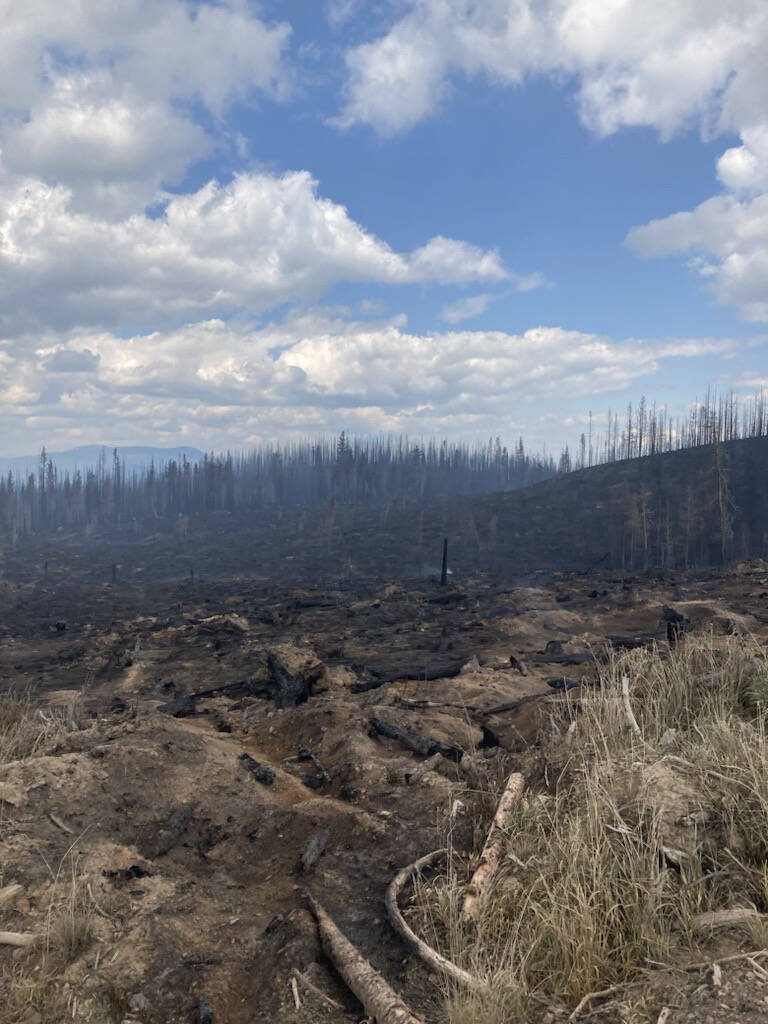Emergency Management Minister Bowinn Ma says British Columbians will need to develop a water conservation mentality moving forward as the province’s drought situation could worsen into the fall and beyond.
There is also the potential for a weather event similar to the catastrophic atmospheric rivers in 2021 if regions of the province receive too much rain too quickly and the ground can’t absorb it fast enough.
It was during the province’s weekly wildfire and drought update Wednesday (Sept. 6) that Ma gave the dire warning. She was joined by Forests Minister Bruce Ralston and other wildfire and drought experts, including Jonathan Boyd, a hydrologist with the Forests Ministry’s River Forecast Centre.
Ma said the province has been working with communities such as Tofino and Sechelt to help them understand the seriousness of the drought.
READ MORE: Quadra Islanders work to protect water in face of growing drought
READ MORE: Ucluelet moves to Stage 1 water restrictions as of Sept. 1
READ MORE: Tofino plans water town hall as rain’s absence continues
“The consequences of the drought can be profound for many communities and individuals. We are already seeing many impacts in the north where ranchers and farmers have been impacted by water scarcity, the inability to irrigate their crops, either through necessary protection orders or simply because of low stream flows.”
She added British Columbians are used to having “plentiful access to beautiful, clean water,” but up until now the province hasn’t had to develop a conservation mentality.
“I want to emphasize how significant the drought that British Columbia is facing right now. It is unlike any kind of drought conditions the province has ever faced, and in my opinion, truly is a sleeping giant of a natural disaster that we are challenged with right now. The impacts will be very, very real.”
READ MORE: Disaster relief available for communities impacted by 2023 B.C. wildfires
The majority of the province remains at level 4 or 5 drought conditions, the two highest drought levels.
“The best-case scenario we can hope for is extended gradual rain over long periods of time that gently recharge our reservoirs, gently recharge our stream systems and our ecosystems back to a healthy place.”
However, if there’s too little rain then there could be an extended drought season that carries into 2024.
But too much rain could pose similar problems to the atmospheric rivers of November 2021 following the heat dome in June of that year. While the province was seeing the beginning of an extreme drought season then, it was “nothing close to what we see this year.”
“I don’t say these things to scare people, but it is important for us to really understand how serious of a drought situation we are in and why when we take the measures that we do to put in water and fish protection orders that it is we only do it because it is absolutely necessary. Because it is serious.”
Boyd said regions like Vancouver Island switch over to the wet season “pretty quick,” and two or three storm systems could actually end the drought.
Where it could be drastic, he said, is regions that don’t typically get as much rain, such as the Interior.
“The drought could linger into the freeze up of winter and of course extend into the spring or summer of next year.”
Ralston said regions would need several inches or more of rainfall over an extended period of time to help alleviate drought conditions.
“Current drought levels are unprecedented and are leading to more severe wildfire impacts, as well as impacts to wildlife habitat and aquatic ecosystems. Fish are particularly at risk this time of year when they spawn.”
Ralston said scientists and experts in his ministry have been closely monitoring stream flows and connected groundwater levels. In some cases where scientists are seeing major threats where fish and salmon could be impacted for generations, “targeted action is being taken.
Over recent weeks, the wildfire situation in the central region has subsidized as we head into fall with longer nights and cooler temperatures. But the north isn’t seeing the same conditions.
Ma said that over the Labour Day long weekend there was substantial wildfire growth in the northwest and Prince George fire centres, with wildfires in the Vanderhoof and Fort St. James region see aggressive fire activity due to the hot, dry and windy conditions.
